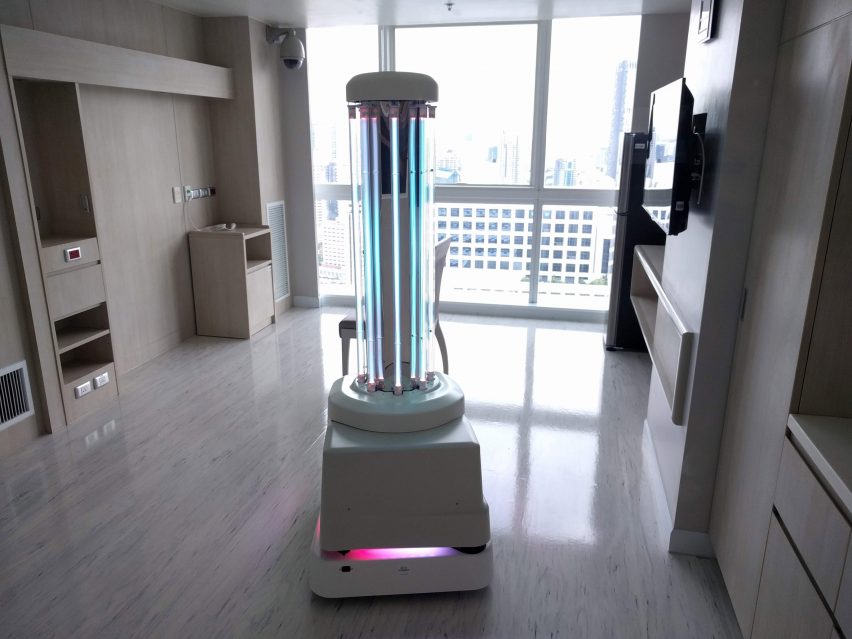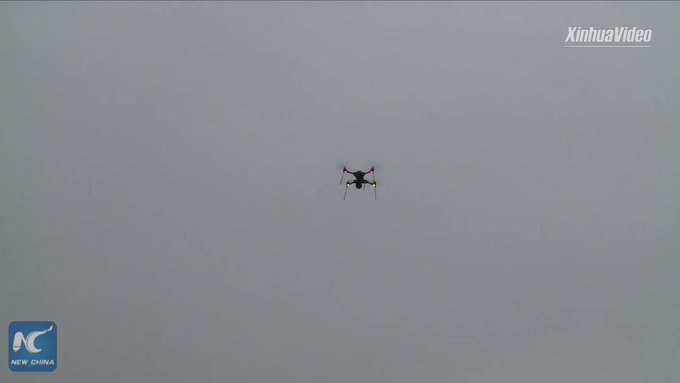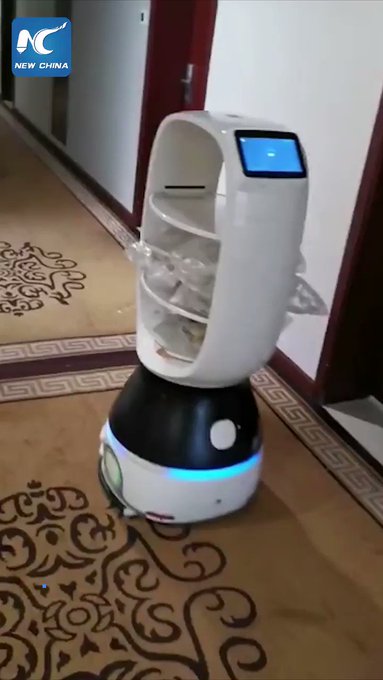Technology is now evolving at such a rapid pace that annual predictions
of trends can seem out-of-date before they even go live as a published
blog post or article. As technology evolves, it enables even faster
change and progress, causing the acceleration of the rate of change,
until eventually it will become exponential.
Here are eight technology trends you should watch for in 2019, and some of the jobs that will be created by these trends
.
1. Artificial Intelligence (AI)
Artificial Intelligence, or AI, has already received a lot of buzz in
recent years, but it continues to be a trend to watch because its
effects on how we live, work and play are only in the early stages. In
addition, other branches of AI have developed, including Machine
Learning, which we will go into below. AI refers to computers systems
built to mimic human intelligence and perform tasks such as recognition
of images, speech or patterns and decision making. AI can do these tasks
faster and more accurately than humans.
AI has been around since 1956 is already widely used. In fact, five
out of six Americans use AI services in one form or another every day,
including navigation apps, streaming services, smartphone personal
assistants, ride-sharing apps, home personal assistants, and smart home
devices. In addition to consumer use, AI is used to schedule trains,
assess business risk, predict maintenance, and improve energy
efficiency, among many other money-saving tasks.
AI is one part of what we refer to broadly as automation, and
automation is a hot topic because of potential job loss. Experts say
automation will eliminate
73 million more jobs by 2030.
However, automation is creating jobs as well as eliminating them,
especially in the field of AI: Pundits predict that jobs in AI will
number 23 million by 2020. Jobs will be created in development,
programming, testing, support and maintenance, to name a few. Artificial
Intelligence architect is one such job. Some say it will soon rival
data scientist in
need for skilled professionals.
To learn more about potential jobs in AI, read about
building a career in AI or why you should earn an AI certification.
2. Machine Learning
Machine Learning is a subset of AI. With Machine Learning, computers
are programmed to learn to do something they are not programmed to do:
They literally learn by discovering patterns and insights from data. In
general, we have two types of learning, supervised and unsupervised.
While Machine Learning is a subset of AI, we also have subsets within
the domain of Machine Learning, including neural networks, natural
language processing (NLP), and deep learning. Each of these subsets
offers an opportunity for specializing in a career field that will only
grow.
Machine Learning is rapidly being deployed in all kinds of
industries, creating a huge demand for skilled professionals. The
Machine Learning market is expected to grow to
$8.81 billion by 2022.
Machine Learning applications are used for data analytics, data mining
and pattern recognition. On the consumer end, Machine Learning powers
web search results, real-time ads and network intrusion detection, to
name only a few of the many tasks it can do.
In addition to completing countless tasks on our behalf, it is generating jobs. Machine Learning jobs
rank among the top emerging jobs
on LinkedIn, with almost 2,000 job listings posted. And these jobs pay
well: In 2017, the median salary for a machine learning engineer
was $106,225. Machine Learning jobs include engineers, developers, researchers, and data scientists.
3. Robotic Process Automation or RPA
Like AI and Machine Learning,
Robotic Process Automation,
or RPA, is another technology that is automating jobs. RPA is the use
of software to automate business processes such as interpreting
applications, processing transactions, dealing with data, and even
replying to emails. RPA automates repetitive tasks that people used to
do. These are not just the menial tasks of a low-paid worker:
up to 45 percent of the activities we do can be automated, including the work of financial managers, doctors and CEOs.
Although Forrester Research estimates RPA automation will threaten the livelihood of
230 million or more
knowledge workers or approximately 9 percent of the global workforce,
RPA is also creating new jobs while altering existing jobs. McKinsey
finds that
less than 5 percent of occupations can be totally automated, but about 60 percent can be partially automated.
For you as the IT professional looking to the future and trying to understand technology trends, RPA offers plenty of
career opportunities,
including developer, project manager, business analyst, solution
architect, and consultant. And these jobs pay well. SimplyHired.com says
the average RPA salary is
$73,861,
but that is the average compiled from salaries for junior-level
developers up to senior solution architects, with the top 10 percent
earning over $141,000 annually.
If you’re interested in pursuing a career in RPA, the
Introduction to Robotic Process Automation (RPA) course is the place to start.
4. Blockchain
Although most people think of blockchain technology in relation to cryptocurrencies such as
Bitcoin,
blockchain offers security that is useful in many other ways. In the
simplest of terms, blockchain can be described as data you can only add
to, not take away from or change. Hence the term “chain” because you’re
making a chain of data. Not being able to change the previous blocks is
what makes it so secure. In addition, blockchains are consensus-driven,
as explained in
this Forbes article,
so no one entity can take control of the data. With blockchain, you
don’t need a trusted third-party to oversee or validate transactions.
This heightened security is why blockchain is used for
cryptocurrency, and why it can play a significant role in protecting
information such as personal medical data. Blockchain could be used to
drastically improve the global supply chain,
as described here, as well as protect assets such as art and real estate.
And as the use of blockchain technology increases, so too does the
demand for skilled professionals. In that regard, we are already behind.
According to
Techcrunch,
blockchain-related jobs are the second-fastest growing category of
jobs, with 14 job openings for every one blockchain developer. A
blockchain developer specializes in developing and implementing
architecture and solutions using blockchain technology. The average
yearly salary of a blockchain developer is $130,000.
The job of a developer is not the only one available in the
blockchain space, however. Employers are also looking for software
engineers, consultants and project managers. Jobs are available at
financial institutions, but also in retail and healthcare, and soon
probably manufacturing as well.
Learn more about becoming a blockchain developer.
5. Edge Computing
Formerly a technology trend to watch, cloud computing has become mainstream, with major players
AWS (Amazon Web Services),
Microsoft Azure
and Google Cloud dominating the market. The adoption of cloud computing
is still growing, as more and more businesses migrate to a cloud
solution. But it’s no longer the emerging technology. Edge is. Move
over, cloud computing, and make way for the edge.
As the quantity of data we’re dealing with continues to increase,
we’ve realized the shortcomings of cloud computing in some situations.
Edge computing is designed to help solve some of those problems as a way
to bypass the latency caused by cloud computing and getting data to a
data center for processing. It can exist “on the edge,” if you will,
closer to where computing needs to happen. For this reason, edge
computing can be used to process time-sensitive data in remote locations
with limited or no connectivity to a centralized location. In those
situations, edge computing can act like mini datacenters. Edge computing
will increase as use the Internet of Things (IoT) devices increases. By
2022, the global edge computing
market is expected to reach $6.72 billion.
As with any growing market, this will create job demand, primarily for software engineers.
Read more about edge computing vs. cloud computing.
6. Virtual Reality and Augmented Reality
Virtual Reality (VR) immerses the user in an environment while
Augment Reality (AR) enhances their environment. Although VR has
primarily been used for gaming thus far, it has also been used for
training, as with
VirtualShip, a simulation software used to train U.S. Navy, Army and Coast Guard ship captains. The popular
Pokemon Go is an example of AR.
Both have enormous potential in training, entertainment, education,
marketing, and even rehabilitation after an injury. Either could be used
to train doctors to do surgery, offer museum-goers a deeper experience,
enhance theme parks, or even enhance marketing, as with this
Pepsi Max bus shelter.
According to an article at Monster.com, the demand for job candidates
with VR knowledge is up 37 percent, but the potential employees are in
short supply. That demand will only increase. There are major players in
the VR market, like Google, Samsung, and Oculus, but plenty of startups
are forming and they will be hiring—or trying to, in light of the
shortage. Getting started in VR doesn’t require a lot of specialized
knowledge. Basic programming skills and a forward-thinking mindset can
land a job, although other employers will be looking for optics as a
skill-set and hardware engineers as well.
7. Cyber Security
Cyber security might not seem like emerging technology, given that it
has been around for a while, but it is evolving just as other
technologies are. That’s in part because threats are constantly new. The
malevolent hackers who are trying to illegally access data are not
going to give up any time soon, and they will continue to find ways to
get through even the toughest security measures. It’s also in part
because new technology is being adapted to enhance security.
Three of those advancements are hardware authentication, cloud technology, and deep learning, according to one expert.
Another
adds data loss prevention and behavioral analytics to the list. As long
as we have hackers, we will have cyber security as an emerging
technology because it will constantly evolve to defend against those
hackers.
As proof of the strong need for cybersecurity professionals, the number of cybersecurity jobs is
growing three times faster
than other tech jobs. However, we’re falling short when it comes to
filling those jobs. As a result, it’s predicted that we will have
3.5 million unfilled cybersecurity jobs by 2021.
Many cyber security jobs pay six-figure incomes, and roles can range from
ethical hacker
to security engineer to Chief Security Officer, offering a promising
career path for someone who wants to get into and stick with this
domain.
8. Internet of Things
Although it sounds like a game you’d play on your smartphone, the
Internet of Things (IoT) is the future.
Many “things” are now being built with WiFi connectivity, meaning they
can be connected to the Internet—and to each other. Hence, the Internet
of Things, or IoT. IoT enables devices, home appliances, cars and much
more to be connected to and exchange data over the Internet. And we’re
only in the beginning stages of IoT: The number of IoT devices reached
8.4 billion in 2017 is and expected to reach 30 billion devices by 2020.
As consumers, we’re already using and benefitting from IoT. We can
lock our doors remotely if we forget to when we leave for work and
preheat our ovens on our way home from work, all while tracking our
fitness on our Fitbits and hailing a ride with Lyft. But businesses also
have much to gain now and in the near future. The IoT can enable better
safety, efficiency and decision making for businesses as data is
collected and analyzed. It can enable predictive maintenance, speed up
medical care, improve customer service, and offer benefits we haven’t
even imagined yet. However, despite this boon in the development and
adoption of IoT, experts say not enough IT professionals are getting
trained for IoT jobs. An
article at ITProToday.com
says we’ll need 200,000 more IT workers that aren’t yet in the
pipeline, and that a survey of engineers found 25.7 percent believe
inadequate skill levels to be the industry’s biggest obstacle to growth.
For someone interested in a career in IoT, that means easy entry into the field if you’re motivated, with
a range of options for getting started.
Skills needed include IoT security, cloud computing knowledge, data
analytics, automation, understanding of embedded systems, device
knowledge, to name only a few. After all, it’s the Internet of Things,
and those things are many and varied, meaning the skills needed are as
well.
Although technologies are emerging and evolving all around us, these
eight domains offer promising career potential now and for the
foreseeable future. And all eight are suffering from a shortage of
skilled workers, meaning the time is right for you to choose one, get
trained, and get on board at the early stages of the technology, positioning you for success now and in the future.





